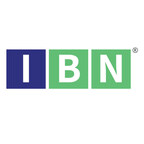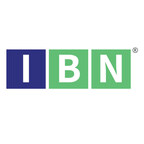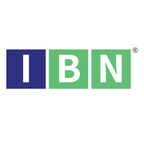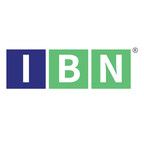Fintech PR
Ping An Reports Steady Growth in Operating Profit, Robust Increases in Net Profit and Life & Health NBV in 9M 2024
HONG KONG and SHANGHAI, Oct. 21, 2024 /PRNewswire/ — Ping An Insurance (Group) Company of China, Ltd. (hereafter “Ping An“, or the “Group”, HKEX: 2318 / 82318; SSE: 601318) today announced its results for the nine months ended September 30, 2024.
In the first nine months of 2024, China’s economy remained generally stable as it pursued high-quality development amidst short-term challenges including economic restructuring, lackluster growth momentum, and increasing external uncertainties. Ping An achieved steady growth with strong resilience in overall business performance by adhering to its core financial businesses, strengthening its “integrated finance + health and senior care” strategy under a customer-centric approach, and delivering “worry-free, time-saving, and money-saving” service experience.
The Group delivered a 15.9% annualized operating return on equity (ROE), with operating profit and net profit attributable to shareholders of the parent company rising 5.5% and 36.1% year on year to RMB113,818 million and RMB119,182 million respectively in the first nine months of 2024. Revenue increased 8.7% year on year to RMB861,817 million*. Three core businesses, namely life and health insurance (Life & Health), property and casualty insurance (Ping An P&C), and banking, maintained positive growth and delivered RMB119,651 million in operating profit attributable to shareholders of the parent company, up 5.7% year on year. Life & Health achieved high-quality development and new business value (NBV) amounted to RMB35,160 million in the first nine months of 2024, up 34.1% year on year. Customers entitled to health and senior care services contributed over 69.6% of Ping An Life’s NBV in the first nine months of 2024.
Deepened “4 channels + 3 products” strategy; Life & Health NBV surged 34.1% year on year
Life & Health improved operational quality and efficiency, leading to significant result in high-quality development. Ping An Life continued to enhance its channels and improve business quality under the “4 channels + 3 products” strategy in the first nine months of 2024. By upgrading “insurance + service” solutions, the company continuously strengthened its presence in health and senior care sectors. Life & Health NBV grew 34.1% year on year to RMB35,160 million in the first nine months of 2024. NBV margin based on annualized new premium (ANP) rose by 5.7 pps year on year to 31.0%.
Ping An Life enhanced its channel capabilities under the value orientation of high-quality development. The company continued to deepen the transformation and build multichannel professional sales capabilities, significantly improving the development quality. Agent channel NBV grew 31.6% year on year in the first nine months of 2024. Ping An Life also effectively improved agent productivity, boosting NBV per agent by 54.7% year on year. The company focused on recruiting high-quality new agents through high-quality existing ones. The number of individual life insurance sales agents was about 362,000 as of September 30, 2024. The proportion of “Talent +” agents increased by 4 pps year on year in new recruits. In respect of cooperation with banks, Ping An Life increased NBV of the bancassurance channel by 68.5% year on year by enhancing outlet operations. The company continuously developed the community finance channel. The 13-month persistency ratio of orphan polices within this channel improved by 6.6 pps year on year in the first nine months of 2024, with NBV up by over 300% year on year. Innovative channels including bancassurance and community finance accounted for 18.8% of Ping An Life’s NBV in the first nine months of 2024, up by 2.4 pps year on year.
Ping An Life diversified and upgraded its product portfolio under a customer-centric philosophy. Playing a role of a shock absorber and stabilizer in the insurance sector, the company focused on core customer demands for health protection, pension reserves, and wealth management. It consistently diversified and upgraded its insurance product portfolio under a customer-centric approach. By leveraging the Group’s health and senior care ecosystem, Ping An Life continuously improved “insurance + service” products. In respect of health care, Ping An Life provided health management services to over 19.50 million customers in the first nine months of 2024. In respect of home-based senior care, Ping An innovated its “medical, nursing, housing and entertainment” alliances, continuously working with its partners to establish service standards and ecosystems. Ping An’s home-based senior care services covered 75 cities across China as of September 30, 2024 with over 150,000 customers eligible for such services, who gave positive general feedback. Ping An unveiled premium senior care communities in five cities as of September 30, 2024, which are currently under construction and will be open for business from 2025 onward.
Ping An P&C and banking businesses maintained stable growth; technology enabled financial businesses to boost quality and efficiency
Ping An P&C maintained stable revenue growth and good business quality. In the first nine months of 2024, the company’s insurance revenue and operating profit increased 4.5% and 39.7% year on year to RMB246,022 million and RMB13,987 million respectively. Ping An P&C improved its overall combined ratio (COR) by 1.5 pps year on year to 97.8% through enhanced business management and risk screening, leading the market.
Ping An Bank maintained resilient business performance as well as adequate capital and risk provisions. The bank’s net profit grew 0.2% year on year to RMB39,729 million in the first nine months of 2024. Retail assets under management (AUM) rose by 2.9% from the beginning of the year to RMB4,148,566 million as of September 30, 2024. Corporate loan balance grew 11.6% from the beginning of the year to RMB1,595,924 million as of September 30, 2024. Core tier 1 capital adequacy ratio rose to 9.33% and the provision coverage ratio stood at 251.19%; non-performing loan ratio remained flat from the beginning of the year at 1.06% as of September 30, 2024.
Ping An delivered excellent results in insurance funds investment. The Group’s insurance funds investment portfolio grew 12.7% from the beginning of the year to over RMB5.32 trillion as of September 30, 2024. Under a philosophy of value investing through cycles, the insurance funds investment portfolio achieved an annualized comprehensive investment yield of 5.0%, up by 1.3 pps year on year.
From the perspective of transforming and upgrading Ping An’s core financial businesses, technology benefits are reflected in higher sales, better business efficiency, and stronger risk management. The volume of services provided by Ping An’s artificial intelligence (AI) service representatives reached about 1.34 billion times, accounting for 80% of total customer service volume in the first nine months of 2024. The AI service representatives responded to and handled customer inquiries and complaints swiftly. Via smart underwriting and smart claim settlement, 93% of Ping An Life’s policies were underwritten within seconds, and it took an average of 7.4 minutes to close a claim with Smart Quick Claim. Moreover, claims savings via smart fraud risk identification amounted to RMB9.1 billion in the first nine months of 2024 as Ping An continuously strengthened risk management. The Group’s patent applications led most international financial institutions, totaling 53,521 and including generative AI patent filings in terms of which Ping An ranked second in the world.
Enhancing the “integrated finance + health and senior care” strategy to provide “worry-free, time-saving, and money-saving” customer service experience
Ping An further advanced integrated finance business and upgraded it from cross-selling to comprehensive customer-centric operation. Ping An built a needs-oriented, customer-centric operation system characterized by digital operations. On the basis of data mining, Ping An leveraged customer insights, product benefits and a smart marketing service platform to improve customer acquisition, activation, migration and retention, providing “worry-free, time-saving, and money-saving” one-stop integrated finance solutions. The Group’s retail customers increased 3.8% from the beginning of the year to 240 million as of September 30, 2024. The customer retention increased, with 25.1% of customers holding four or more contracts within the Group, resulting in a retention rate of 98.0%. Retail cross-selling continued to deepen as approximately 16.88 million times of cross-selling occurred within the Group in the first nine months of 2024. As of September 30, 2024, over 88.26 million retail customers held multiple contracts with different subsidiaries of the Group. Contracts per retail customer reached 2.92. Retail customers and contracts per retail customer have increased 21.3% and 9.4% respectively since December 31, 2019 to September 30, 2024.
Ping An continuously implemented its health and senior care strategy to build significant differential advantages. Nearly 63% of Ping An’s 240 million retail customers used services from the health and senior care ecosystem as of September 30, 2024. They held approximately 3.35 contracts and RMB57,800 in AUM per capita, 1.6 times and 3.9 times those held by non-users of these services respectively. The health and senior care ecosystem is becoming an increasingly important enabler to Ping An Life’s core businesses. Over 19.50 million customers of Ping An Life used services from the health and senior care ecosystem in the first nine months of 2024. Approximately 76% of Ping An Life’s newly enrolled customers used health management services in the first nine months of 2024. Customers entitled to health and senior care services contributed over 69.6% of Ping An Life’s NBV, including approximately 39.0% from those entitled to senior care services and approximately 30.6% from those entitled to health care services.
Ping An made significant progress in developing health management and medical service networks. The Group maintained exclusive health records for customers, and provided membership-based health and senior care services via family doctors and senior care concierges. Ping An guided members through an end-to-end “online, in-store, and in-home” service network covering consultation, diagnosis, treatment and services under AI-enabled 24/7 seconds-level management. Its health and senior care ecosystem had nearly 64,000 paying corporate customers, serving their over 26 million employees as of September 30, 2024. PKU Healthcare Group’s revenue continued to grow and reached approximately RMB3.93billion in the first nine months of 2024. Meanwhile, Ping An integrated domestic and overseas premium resources including medical services, health services, commodities and medicines to build extensive partner networks in China and abroad. Ping An had about 50,000 in-house doctors and contracted external doctors in China as of September 30, 2024. Ping An has partnered with over 36,000 hospitals (including all top 100 hospitals and 3A hospitals), over 104,000 health care management institutions and over 233,000 pharmacies in China. Overseas, Ping An has partnered with over 1,300 health care institutions in 35 countries.
Ping An actively fulfilled its social responsibilities and served green development and rural vitalization. Ping An’s green insurance premium income amounted to RMB37,341 million and funds provided for rural industrial vitalization via “Ping An Rural Communities Support” totaled RMB31,406 million in the first nine months of 2024. The Group remained No.1 in the financial industry on China Central Television (CCTV)’s “China’s Top 100 Listed Companies by ESG” list in 2024.
Looking ahead, the fundamentals of China’s economic development remain unchanged, with great market potential and strong economic resilience continuing to provide favorable conditions. As the state effectively implements various decisions and a series of incremental policies, China’s growth momentum will gradually strengthen. The economic trend of continued stability with steady progress will be further bolstered. The health care, senior care and financial markets are poised to embrace new growth opportunities. To achieve high-quality business development, Ping An will uphold a people-centric philosophy, maintain its strategic focus on core financial businesses, advance its technology-driven “integrated finance + health and senior care” strategy, improve operations and management to drive business recovery and growth, and continually enhance the quality and effectiveness of financial services for the real economy. Ping An is committed to creating long-term, stable and sustainable value for customers, employees, shareholders and society, as well as contributing to China’s development into a financial powerhouse.
* Based on the International Financial Reporting Standards issued by the International Accounting Standards Board
View original content:https://www.prnewswire.co.uk/news-releases/ping-an-reports-steady-growth-in-operating-profit-robust-increases-in-net-profit-and-life–health-nbv-in-9m-2024-302281731.html

Fintech PR
URBAN REVIVO Celebrates 2024 Milestones and Unveils Ambitious Global Expansion Plans for 2025

GUANGZHOU, China, Jan. 6, 2025 /PRNewswire/ — At the dawn of a new year, the renowned fashion brand URBAN REVIVO (UR) proudly celebrates significant milestones in its international market expansion throughout 2024 and unveils ambitious plans for further global outreach in 2025. Building on a successful entry into Southeast Asian markets, URBAN REVIVO now sets its sights on major fashion capitals worldwide.
2024: A Year of Strategic Growth
In a pivotal year, URBAN REVIVO has successfully opened 9 new stores across key Southeast Asian markets including Singapore, Malaysia, Thailand, Vietnam, and the Philippines. This expansion brings the total number of the brand’s stores in the region to nearly 20. The strategic placement of these stores has not only strengthened URBAN REVIVO’s presence but also showcased its competitive edge. By tailoring each store to reflect the unique character of its city, URBAN REVIVO transforms them into urban art centers that focus on enhancing consumer experiences.
Richard Tang, CEO of URBAN REVIVO’s International Business, commented on the achievement: “As a brand committed to globalizing fashion retail, our breakthroughs in overseas markets during 2024 have been remarkable. The continuous opening of new stores reflects not just our expansion speed but also strong market confidence in URBAN REVIVO. Our performance in Southeast Asia exceeded expectations with several stores becoming profitable immediately upon opening.”
Looking Ahead: Ambitious Plans for 2025
Building on its success, URBAN REVIVO plans to expand into iconic global fashion cities such as London, New York City, Tokyo, and Hong Kong next year. This strategic move signifies URBAN REVIVO’s entry into the world’s top-tier fashion hubs. While accelerating its expansion into new markets, the brand will continue to strengthen its presence in Southeast Asia through franchising in addition to direct operations.
The brand is dedicated to refining a seamless omnichannel shopping experience that unites online platforms with physical stores. Through the strategic use of social media and live-commerce platforms, it seeks to cultivate stronger connections with consumers across the globe.
The Vision of Global Live Fashion
Established with the mission of enabling more customers access to premium, trendy, and fashion apparel, URBAN REVIVO has emerged as a prominent name in the global fast-fashion industry. Since its inception, the brand has maintained its dedication to motivating individuals who view every journey as a runway and propelling fashion into the future. This unwavering commitment has positioned URBAN REVIVO as a favored choice for trendsetters in search of innovative and distinctive wardrobe options each season.
By embracing “Global Live Fashion” as its new positioning statement, URBAN REVIVO strives to be recognized as the most engaging fast-fashion retailer globally. This goal will be achieved by providing an immersive art shopping experience that reflects the latest consumer trends, with each store offering weekly updates and displaying thousands of SKUs. Meanwhile, supported by design centers based in China and Europe, URBAN REVIVO works with over 600 designers who meticulously cater designs that meet diverse body types and aesthetic preferences across Asia and Europe, truly embodying the brand’s belief that “fashion never rests.”

About URBAN REVIVO
Founded in 2006, URBAN REVIVO (UR) is a global live fashion brand that strives to elevate affordable high fashion by offering creative, high-quality, sustainable designs. With over 400 stores in China, Singapore, Malaysia, Thailand, Vietnam and the Philippines, and an extensive online network in Europe, North America, and beyond, URBAN REVIVO ensures the highest standards through advanced supply chain management and technology. The brand’s mission is to make high-quality fashion accessible to everyone and to become the world’s most influential fashion brand.
Photo – https://mma.prnewswire.com/media/2589382/URBAN_REVIVO_Soho_Store_Design_Upcoming_Opening.jpg
Photo – https://mma.prnewswire.com/media/2589383/URBAN_REVIVO_One_Bangkok_Store_Thailand.jpg
![]() View original content:https://www.prnewswire.co.uk/news-releases/urban-revivo-celebrates-2024-milestones-and-unveils-ambitious-global-expansion-plans-for-2025-302341104.html
View original content:https://www.prnewswire.co.uk/news-releases/urban-revivo-celebrates-2024-milestones-and-unveils-ambitious-global-expansion-plans-for-2025-302341104.html

Fintech PR
Payroll Service Market Anticipates Strong Growth Amid Rising Automation Demand

MIAMI, Jan. 5, 2025 /PRNewswire/ — The cloud-based payroll software market is set for continued growth, with projections showing a significant increase in market value over the next few years. This trend reflects a growing reliance on automated systems to manage payroll processes, boosting efficiency and reducing manual errors.
The payroll service industry is evolving rapidly, driven by advancements in technology and shifting workforce dynamics. As 2025 begins, businesses are turning to payroll processing service providers more than ever to streamline operations, reduce costs, and ensure compliance in an increasingly complex regulatory environment.
Technological Advancements in Payroll Solutions
Payroll solutions are entering a new era, driven by cutting-edge technologies like cloud computing, artificial intelligence (AI), and machine learning. These advancements are transforming payroll management, enabling real-time data access, automating complex tasks, and minimizing errors. From precise tax calculations to seamless benefits administration and accurate employee compensation, modern payroll systems are tackling challenges with unparalleled efficiency. As businesses increasingly embrace these innovations, the role of technology in redefining payroll services continues to make headlines, highlighting its impact on streamlining operations and ensuring compliance.
Streamline Your AP Processes—Book Your FREE 30-Minute Consultation Now! :
“Our clients are benefiting from faster processing times, automated compliance updates, and an overall reduction in manual work,” said Ajay Mehta, CEO of IBN Technologies. “The role of technology in payroll management cannot be overstated, and it’s helping businesses focus on growth rather than administrative tasks.”
Adapting to a Changing Workforce
Most of the top companies embrace remote, hybrid, and gig economy workforces, manage payroll processing to accommodate diverse employment models. This includes handling multi-state and international payroll, managing freelancers, and ensuring compliance with varying tax laws.
“Businesses are increasingly hiring remote workers and freelancers, making it more critical than ever for payroll service providers to ensure that they are compliant with complex regulations,” said Ajay Mehta, CEO of IBN Technologies. “Our clients can rely on us to navigate these challenges and provide seamless payroll experiences.”
Why Automation is the Future of Payroll
As 2025 unfolds, payroll services are undergoing a transformative shift, driven by automation, cloud technology, and AI. Cloud-based platforms are offering businesses unparalleled flexibility, while automation streamlines processes, reduces errors, and enhances accuracy. Integration with HR and financial systems simplifies operations, and self-service portals empower employees with greater transparency and control. Meanwhile, advanced solutions are tackling the complexities of global compliance, ensuring businesses meet international regulations. Together, these innovations are revolutionizing payroll, creating a more efficient, secure, and employee-focused experience for the modern workforce.
Modern Payroll Management
Companies like IBN Technologies is at the forefront of driving innovation and efficiency in modern business operations. By leveraging advanced technologies like automation, AI, and seamless integrations, they empower enterprises to streamline processes, enhance accuracy, and meet the demands of a dynamic global market. Focused on delivering customized solutions, IBN is transforming traditional workflows into agile, efficient systems, setting new benchmarks in operational excellence.
About IBN Technologies
IBN Technologies LLC, an outsourcing specialist with 25 years of experience, serves clients across the United States, United Kingdom, Middle East, and India. Renowned for its expertise in RPA, Intelligent process automation includes AP Automation services like P2P, Q2C, and Record-to-Report. IBN Technologies provides solutions compliant with ISO 9001:2015, 27001:2022, CMMI-5, and GDPR standards. The company has established itself as a leading provider of IT, KPO, and BPO outsourcing services in finance and accounting, including CPAs, hedge funds, alternative investments, banking, travel, human resources, and retail industries. It offers customized solutions that drive efficiency and growth.
Contact Details:
Pradip
[email protected]
+1 – 844 – 644 – 8440
USA: IBN Technologies LLC
66 West Flagler Street Suite 900 Miami, FL 33130
India: Global Delivery Centre
IBN Technologies Limited
Kohinoor House, 2nd floor,
691/A/1B, Plot no. 7,
Bibwewadi Road, Pune-411037
Description- Payroll services transform with AI, cloud tech, and automation, enhancing efficiency, accuracy, and compliance.
Logo – https://mma.prnewswire.com/media/2581946/IBN_Technologies_Logo.jpg
![]() View original content:https://www.prnewswire.co.uk/news-releases/payroll-service-market-anticipates-strong-growth-amid-rising-automation-demand-302342396.html
View original content:https://www.prnewswire.co.uk/news-releases/payroll-service-market-anticipates-strong-growth-amid-rising-automation-demand-302342396.html

Fintech PR
Artificial Intelligence (AI) in Trading Market to Reach USD 35 Billion by 2030, Growing at a 10% CAGR | Valuates Reports
BANGALORE, India, Jan. 3, 2025 /PRNewswire/ — AI in Trading Market is Segmented by Type (Software, Services), by Application (Automotive, IT & Telecommunication, Transportation & Logistics, Energy & Utilities, Healthcare, Retail, Manufacturing).
The Global Artificial Intelligence in Trading Market was valued at USD 18 Billion in 2023 and is anticipated to reach USD 35 Billion by 2030, witnessing a CAGR of 10% during the forecast period 2024-2030.
Get Free Sample: https://reports.valuates.com/request/sample/QYRE-Auto-30U5674/Global_Artificial_Intelligence_in_Trading_Market
Major Factors Driving the Growth of Artificial Intelligence (AI) in Trading Market:
The Artificial Intelligence in Trading market is on a robust growth trajectory, driven by the increasing adoption of AI technologies to enhance trading performance and operational efficiency. The integration of machine learning algorithms, predictive analytics, and automated trading systems is transforming the landscape of financial trading, enabling more informed and strategic decision-making. The rising complexity and volatility of financial markets necessitate advanced AI-driven solutions that can analyze vast amounts of data, identify market trends, and execute trades with precision and speed. Additionally, the continuous advancements in AI and machine learning technologies are expanding the capabilities and applications of AI in trading, making these solutions more accessible and effective for a broader range of traders and financial institutions. The growing emphasis on data-driven trading strategies, coupled with the need for competitive advantage and risk management, propels the demand for AI-driven trading technologies. As financial markets continue to evolve and embrace digital transformation, the Artificial Intelligence in Trading market is poised to achieve significant growth, driven by innovation, investment, and the increasing reliance on technology-driven trading solutions.
Unlock Insights: View Full Report Now! https://reports.valuates.com/market-reports/QYRE-Auto-30U5674/global-artificial-intelligence-in-trading
TRENDS INFLUENCING THE GROWTH OF THE GLOBAL AI IN TRADING MARKET:
Software solutions are instrumental in driving the growth of the Artificial Intelligence in Trading market by enhancing the efficiency, accuracy, and speed of trading operations. Advanced trading software incorporates machine learning algorithms, predictive analytics, and real-time data processing capabilities, enabling traders to make informed decisions based on comprehensive market insights. These software platforms facilitate automated trading strategies, allowing for the execution of trades at optimal times without human intervention, thereby reducing latency and increasing profitability. Additionally, sophisticated risk management tools integrated into trading software help in identifying and mitigating potential risks, ensuring more stable and secure trading environments. The continuous evolution of trading software, with the integration of AI-driven features such as sentiment analysis and anomaly detection, further propels market growth by offering traders innovative tools to navigate complex financial markets. The increasing reliance on technology-driven trading solutions underscores the critical role of software in expanding the Artificial Intelligence in Trading market.
Services play a pivotal role in driving the growth of the Artificial Intelligence in Trading market by providing essential support and expertise required to implement and optimize AI-driven trading strategies. These services include consulting, system integration, data management, and ongoing technical support, which are crucial for financial institutions and traders looking to leverage AI technologies effectively. Professional services help organizations navigate the complexities of AI adoption, ensuring that AI models are accurately tailored to specific trading needs and market conditions. Additionally, managed services offer continuous monitoring and maintenance of AI systems, ensuring their optimal performance and adaptability to evolving market dynamics. Training and education services further enhance the capabilities of trading teams, equipping them with the necessary skills to utilize AI tools effectively. The comprehensive range of services provided by specialized firms enables seamless integration of AI technologies into trading operations, thereby accelerating the adoption and expansion of the Artificial Intelligence in Trading market.
Financial services are a major catalyst in the growth of the Artificial Intelligence in Trading market, as they are at the forefront of adopting AI technologies to gain a competitive edge in the financial markets. Investment banks, hedge funds, asset management firms, and proprietary trading firms increasingly utilize AI-driven trading systems to enhance their trading strategies, improve decision-making processes, and optimize portfolio management. The ability of AI to analyze vast amounts of financial data, identify market trends, and execute trades at high speeds enables financial services firms to achieve higher returns and manage risks more effectively. Additionally, the integration of AI in areas such as algorithmic trading, fraud detection, and customer service enhances operational efficiency and service quality within financial institutions. The growing recognition of AI’s potential to transform trading practices and deliver superior financial performance drives the continuous investment and expansion of AI technologies in the financial services sector, thereby propelling the growth of the Artificial Intelligence in Trading market.
The increasing demand for high-speed trading is a significant factor driving the Artificial Intelligence in Trading market. In today’s fast-paced financial markets, the ability to execute trades within milliseconds can provide a substantial competitive advantage. AI-driven trading systems are designed to process large volumes of data and execute trades at speeds that far surpass human capabilities, enabling traders to capitalize on fleeting market opportunities. The rise of high-frequency trading (HFT) strategies, which rely on rapid data analysis and automated execution, underscores the need for advanced AI technologies that can deliver the required speed and precision. The growing complexity and volatility of financial markets further amplify the demand for high-speed trading solutions, as traders seek to navigate rapid price fluctuations and capitalize on minute market movements. The continuous advancement of AI technologies to enhance trading speed and efficiency drives the expansion of the Artificial Intelligence in Trading market.
The availability and integration of vast amounts of financial data are crucial drivers of the Artificial Intelligence in Trading market. The proliferation of data sources, including market feeds, news articles, social media, and economic indicators, provides a rich foundation for AI algorithms to analyze and derive actionable insights. Effective integration of diverse data sets allows AI systems to develop more accurate predictive models and trading strategies, enhancing their ability to anticipate market movements and make informed trading decisions. Additionally, the advancement of big data technologies and data processing frameworks facilitates the seamless ingestion, storage, and analysis of large-scale financial data, enabling AI-driven trading systems to operate more efficiently and effectively. The increasing emphasis on data-driven decision-making in trading practices underscores the importance of robust data integration capabilities, thereby fueling the growth of the Artificial Intelligence in Trading market.
Effective risk management and mitigation are critical factors driving the Artificial Intelligence in Trading market. AI-driven trading systems offer advanced risk assessment and management capabilities that help traders and financial institutions identify, evaluate, and mitigate potential risks in real-time. Machine learning algorithms can analyze historical and real-time data to detect abnormal trading patterns, predict market downturns, and optimize portfolio allocations to minimize exposure to adverse market conditions. Additionally, AI technologies enable the development of sophisticated hedging strategies and automated stop-loss mechanisms, enhancing the ability to manage financial risks proactively. The ability to quickly adapt to changing market dynamics and implement risk mitigation measures is essential for maintaining financial stability and achieving sustainable trading performance. As the complexity and interconnectedness of financial markets increase, the demand for robust AI-driven risk management solutions intensifies, thereby fueling the growth of the Artificial Intelligence in Trading market.
Achieving a competitive advantage is a significant driver in the growth of the Artificial Intelligence in Trading market. Financial institutions and traders seek to leverage AI technologies to gain an edge over competitors by enhancing the speed, accuracy, and efficiency of their trading operations. AI-driven trading systems enable the development of proprietary trading strategies, optimize trade execution, and improve the ability to anticipate market movements, thereby increasing profitability and market share. The ability to process and analyze vast amounts of data in real-time allows traders to make informed decisions faster than competitors relying on traditional trading methods. Additionally, AI technologies facilitate the customization of trading strategies to align with specific investment goals and risk profiles, further differentiating traders in the competitive financial landscape. The pursuit of superior performance and the need to stay ahead in the highly competitive trading environment drive the adoption and investment in AI-driven trading solutions, thereby propelling the growth of the Artificial Intelligence in Trading market.
Claim Yours Now! https://reports.valuates.com/api/directpaytoken?rcode=QYRE-Auto-30U5674&lic=single-user
AI IN TRADING MARKET SHARE
China and the United States are two leaders in the AI industry. On the AI 100 list (2022) released by CB Insights, the number of companies in the United States ranks first, with more than 70 companies, followed by the United Kingdom, with 8 companies on the list. China and Canada both hold 5 companies on the list. According to data from the China Academy of Information and Communications Technology, the scale of China’s core artificial intelligence industry reached ¥508 Billion in 2022, a year-on-year increase of 18%.
The Artificial Intelligence in Trading market exhibits significant regional variations, influenced by factors such as financial market maturity, technological infrastructure, and regulatory environments. North America leads the market, driven by the presence of major financial hubs like New York and Silicon Valley, advanced technological infrastructure, and a high concentration of fintech startups specializing in AI-driven trading solutions.
Key Companies:
- IBM Corporation
- Trading Technologies International, Inc
- GreenKey Technologies, LLC
- Trade Ideas, LLC
- Imperative Execution Inc
- Looking Glass Investments LLC
- Aitrades
- Kavout
- Auquan
- WOA
- Techtrader
Purchase Regional Report: https://reports.valuates.com/request/regional/QYRE-Auto-30U5674/Global_Artificial_Intelligence_in_Trading_Market
SUBSCRIPTION
We have introduced a tailor-made subscription for our customers. Please leave a note in the Comment Section to know about our subscription plans.
DISCOVER MORE INSIGHTS: EXPLORE SIMILAR REPORTS!
– AI Content Generation Market was estimated to be worth USD 1108 Million in 2023 and is forecast to a readjusted size of USD 5958 Million by 2030 with a CAGR of 27.3% during the forecast period 2024-2030.
– AI Crypto Trading Bot Market was valued at USD 21.69 Million in 2022 and is anticipated to reach USD 145.27 Million by 2029, witnessing a CAGR of 37.2% during the forecast period 2023-2029.
– Industrial Artificial Intelligence Market
– Artificial Intelligence for Retail Market was estimated to be worth USD 942.3 Million in 2023 and is forecast to a readjusted size of USD 1249.7 Million by 2030 with a CAGR of 3.2% during the forecast period 2024-2030.
– The global AI In Telecommunication market was valued at USD 1723 Million in 2023 and is anticipated to reach USD 19170 Million by 2030, witnessing a CAGR of 40.6% during the forecast period 2024-2030.
– Artificial Intelligence-based Security Market was estimated to be worth USD 6925 Million in 2023 and is forecast to a readjusted size of USD 20200 Million by 2030 with a CAGR of 16.4% during the forecast period 2024-2030.
– The global AI Data Center market was valued at USD 22615.04 Million in 2023 and is anticipated to reach USD 68317.57 Million by 2030, witnessing a CAGR of 17.11%during the forecast period 2024-2030.
– Artificial Intelligence (AI) in Mining Market was estimated to be worth USD 814 Million in 2023 and is forecast to a readjusted size of USD 1674 Million by 2030 with a CAGR of 11.0% during the forecast period 2024-2030.
– AI (Artificial Intelligence) Decision Making Market
– The AI Companion market was valued at USD 102 Million in 2023 and is anticipated to reach USD 632 Million by 2030, witnessing a CAGR of 98%% during the forecast period 2024-2030.
– Algorithmic Trading Software Market
DISCOVER OUR VISION: VISIT ABOUT US!
Valuates offers in-depth market insights into various industries. Our extensive report repository is constantly updated to meet your changing industry analysis needs.
Our team of market analysts can help you select the best report covering your industry. We understand your niche region-specific requirements and that’s why we offer customization of reports. With our customization in place, you can request for any particular information from a report that meets your market analysis needs.
To achieve a consistent view of the market, data is gathered from various primary and secondary sources, at each step, data triangulation methodologies are applied to reduce deviance and find a consistent view of the market. Each sample we share contains a detailed research methodology employed to generate the report. Please also reach our sales team to get the complete list of our data sources.
GET A FREE QUOTE
Valuates Reports
[email protected]
For U.S. Toll-Free Call 1-(315)-215-3225
WhatsApp: +91-9945648335
Website: https://reports.valuates.com
Blog: https://valuatestrends.blogspot.com/
Pinterest: https://in.pinterest.com/valuatesreports/
Twitter: https://twitter.com/valuatesreports
Facebook: https://www.facebook.com/valuatesreports/
YouTube: https://www.youtube.com/@valuatesreports6753
https://www.facebook.com/valuateskorean
https://www.facebook.com/valuatesspanish
https://www.facebook.com/valuatesjapanese
https://valuatesreportspanish.blogspot.com/
https://valuateskorean.blogspot.com/
https://valuatesgerman.blogspot.com/
https://valuatesreportjapanese.blogspot.com/
Logo: https://mma.prnewswire.com/media/1082232/Valuates_Reports_Logo.jpg
![]() View original content:https://www.prnewswire.co.uk/news-releases/artificial-intelligence-ai-in-trading-market-to-reach-usd-35-billion-by-2030-growing-at-a-10-cagr–valuates-reports-302341827.html
View original content:https://www.prnewswire.co.uk/news-releases/artificial-intelligence-ai-in-trading-market-to-reach-usd-35-billion-by-2030-growing-at-a-10-cagr–valuates-reports-302341827.html

-

 Fintech PR5 days ago
Fintech PR5 days agoOutsourced Accounting Service: The New Standard for Business Finance Industry
-

 Fintech PR6 days ago
Fintech PR6 days agoBybit Launchpad Onboards Xterio, Opening up Opportunities in Blockchain Gaming for Users
-

 Fintech PR5 days ago
Fintech PR5 days agoCKGSB Professor Mei Jianping Launches Global Indices Tracking Impressionist, Contemporary, and Chinese Art Markets
-

 Fintech PR5 days ago
Fintech PR5 days agoIBN Technologies Sets the Benchmark in Financial Management Accounting Excellence
-

 Fintech PR6 days ago
Fintech PR6 days agoIBN Technologies LLC Steps in to Support Clients After Bench Accounting’s Unexpected Closure
-

 Fintech PR5 days ago
Fintech PR5 days agoDayOne Launches as an Independent Global Data Center Pioneer Following Series B Funding Closure
-

 Fintech PR5 days ago
Fintech PR5 days agoGES Completes Sale to Truelink Capital
-

 Fintech PR5 days ago
Fintech PR5 days agoInnocan Pharma Announces Closing of Private Placement for Gross Proceeds of C$635,444.60




